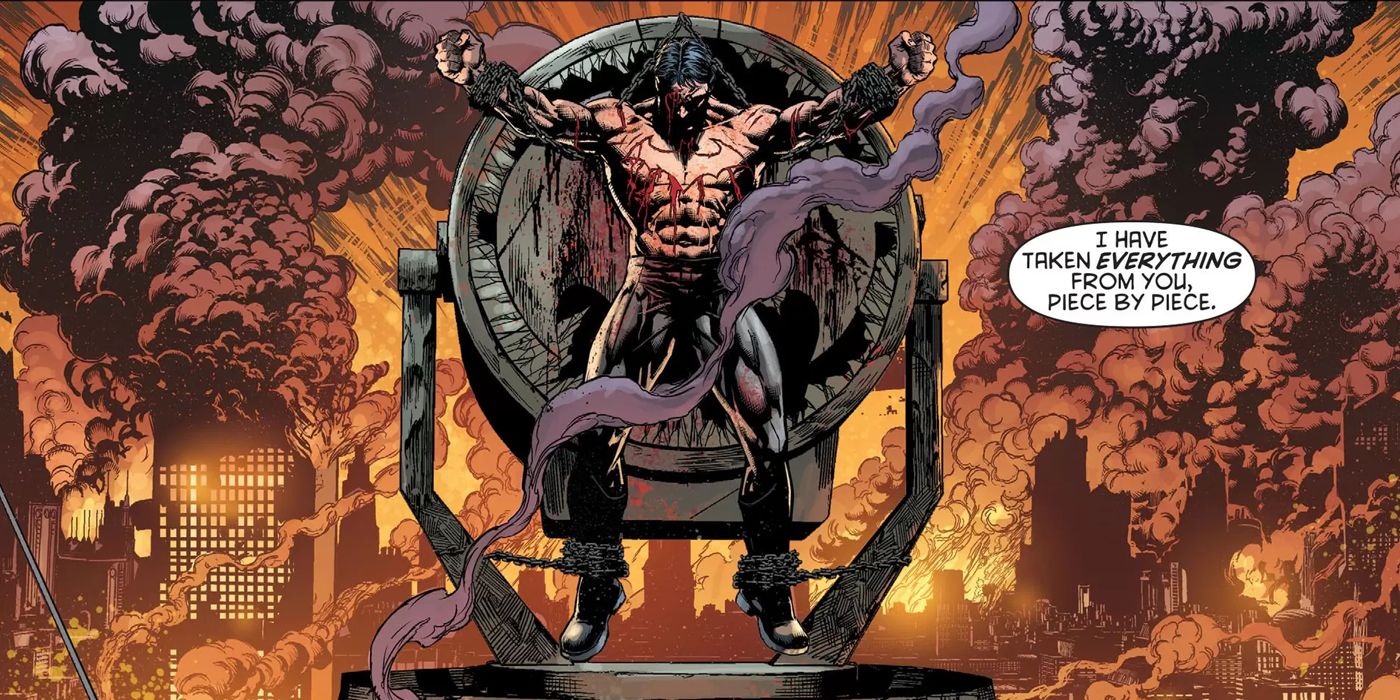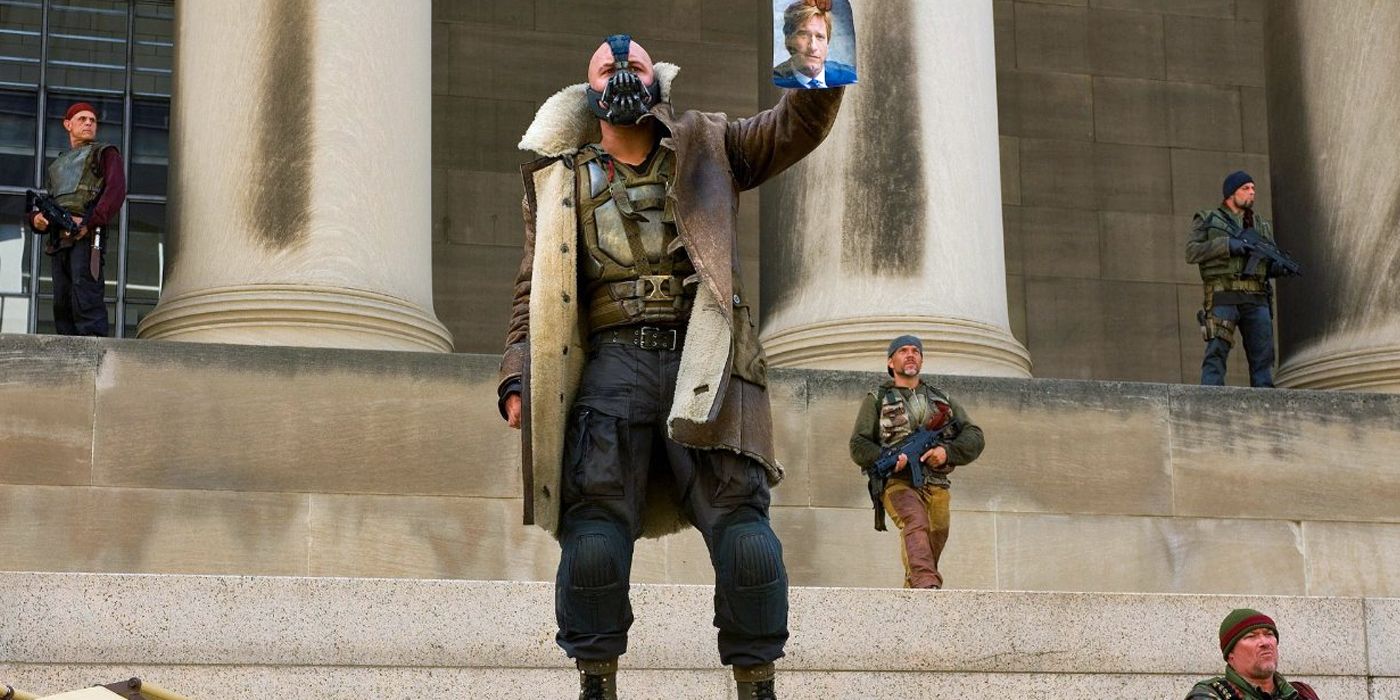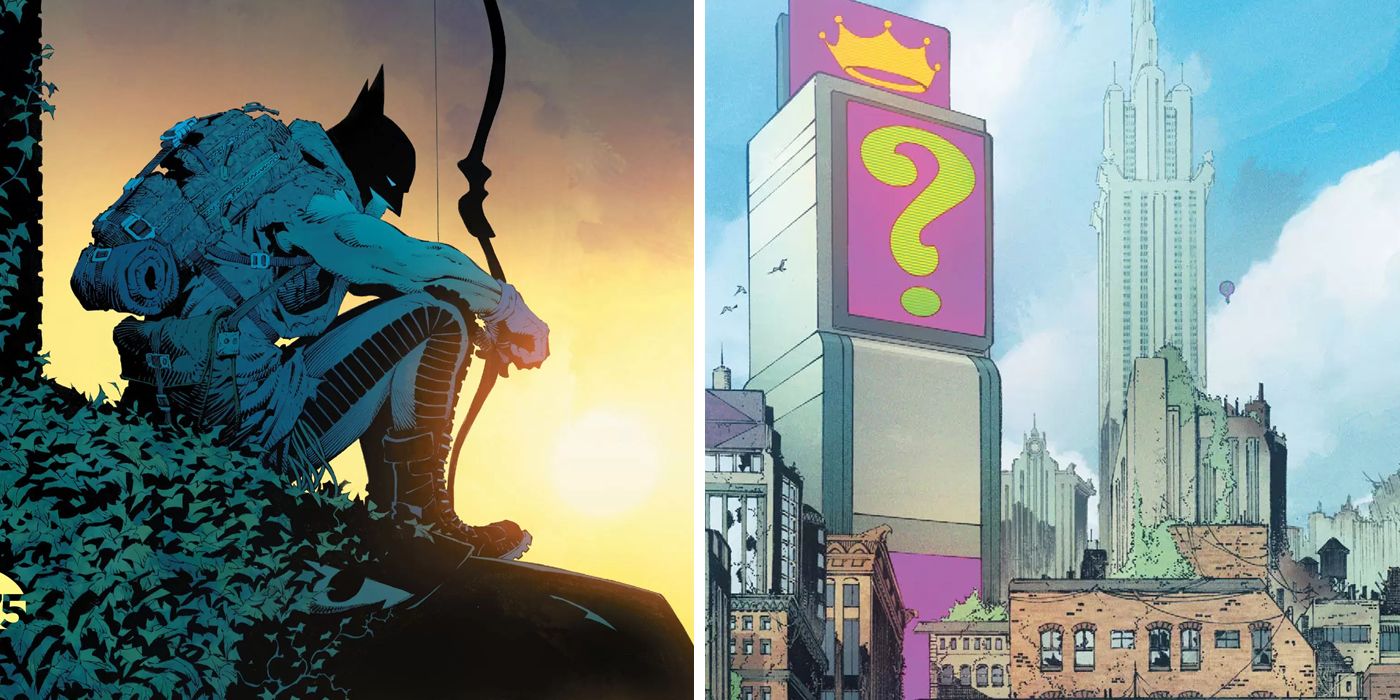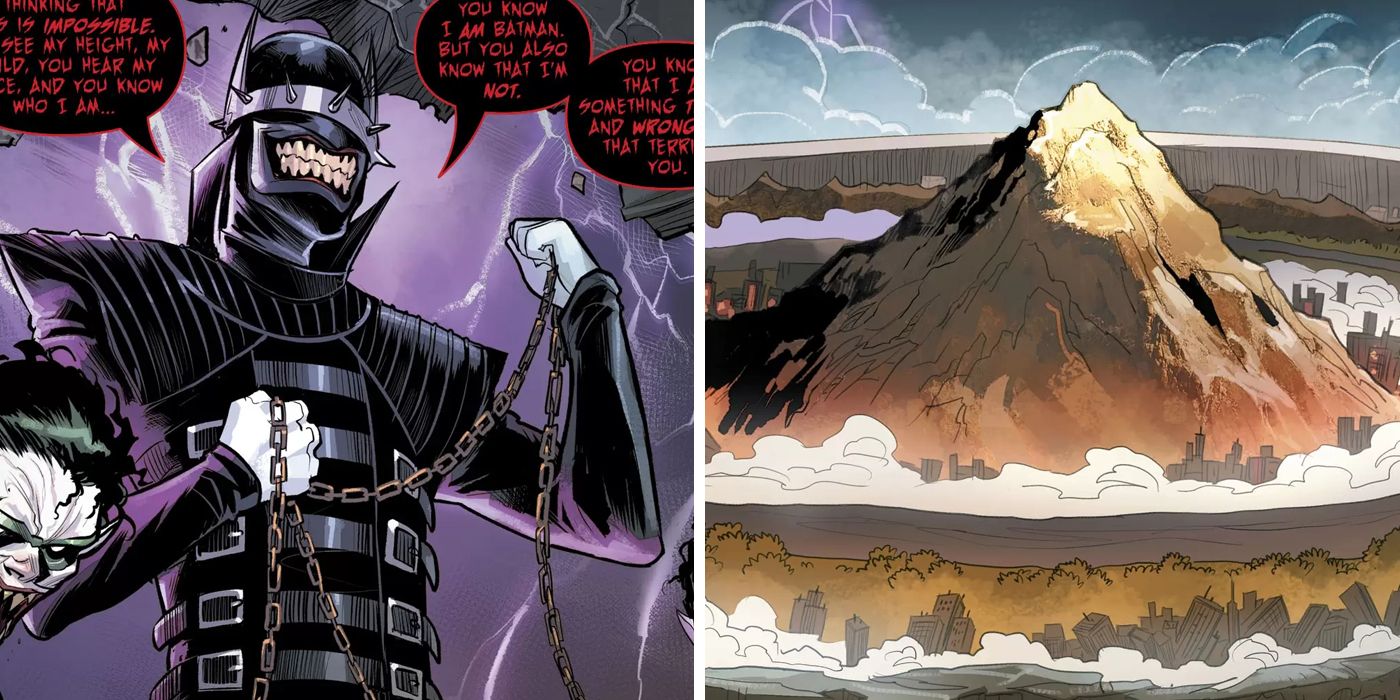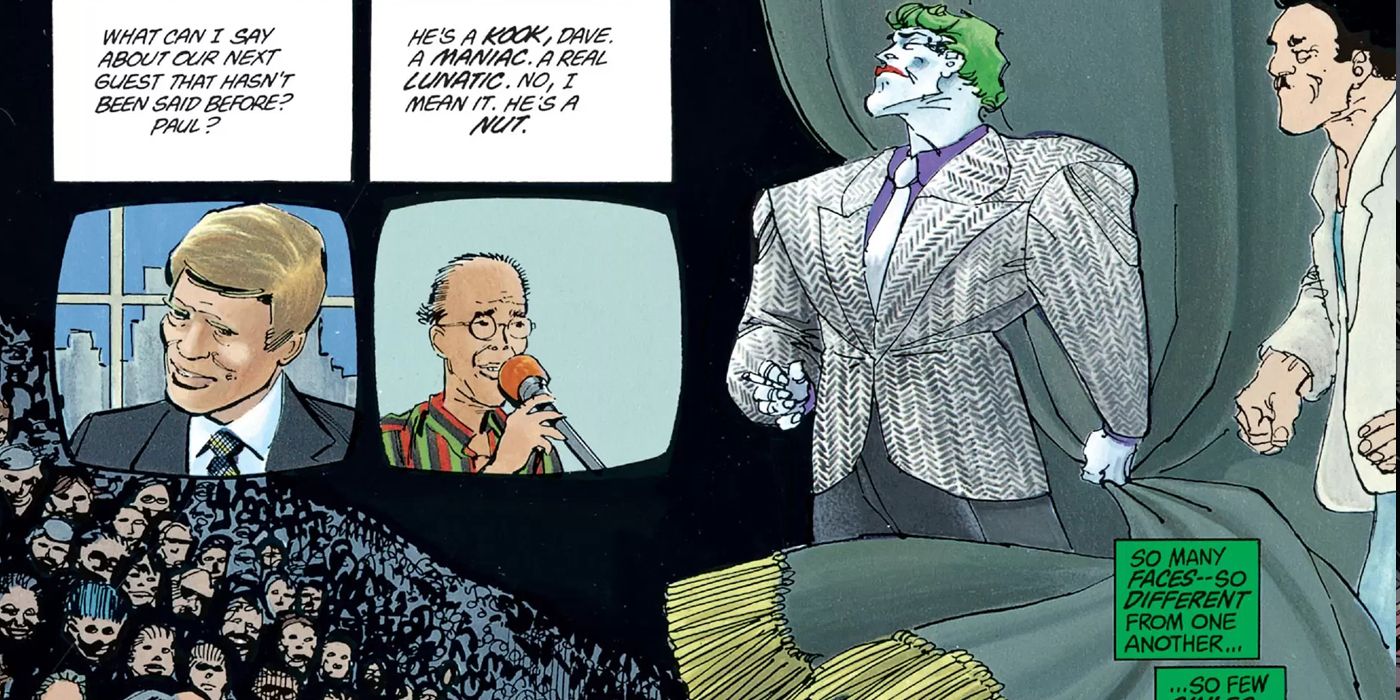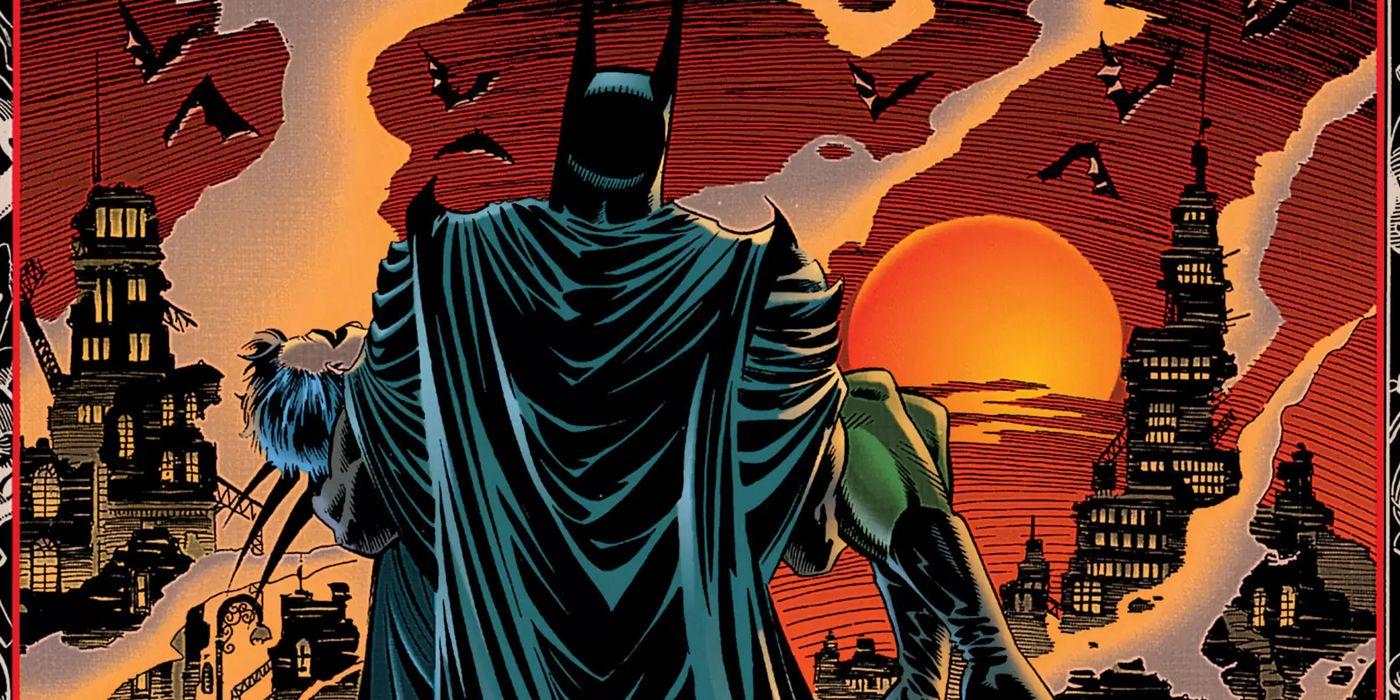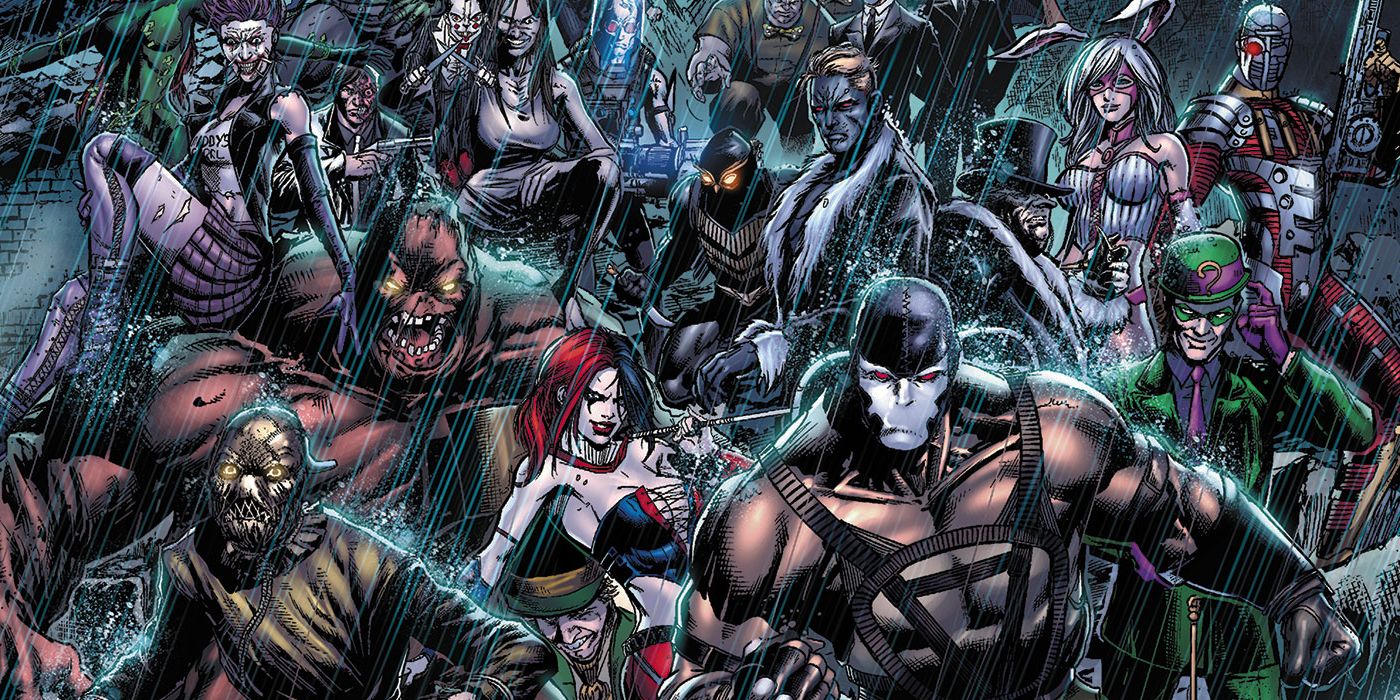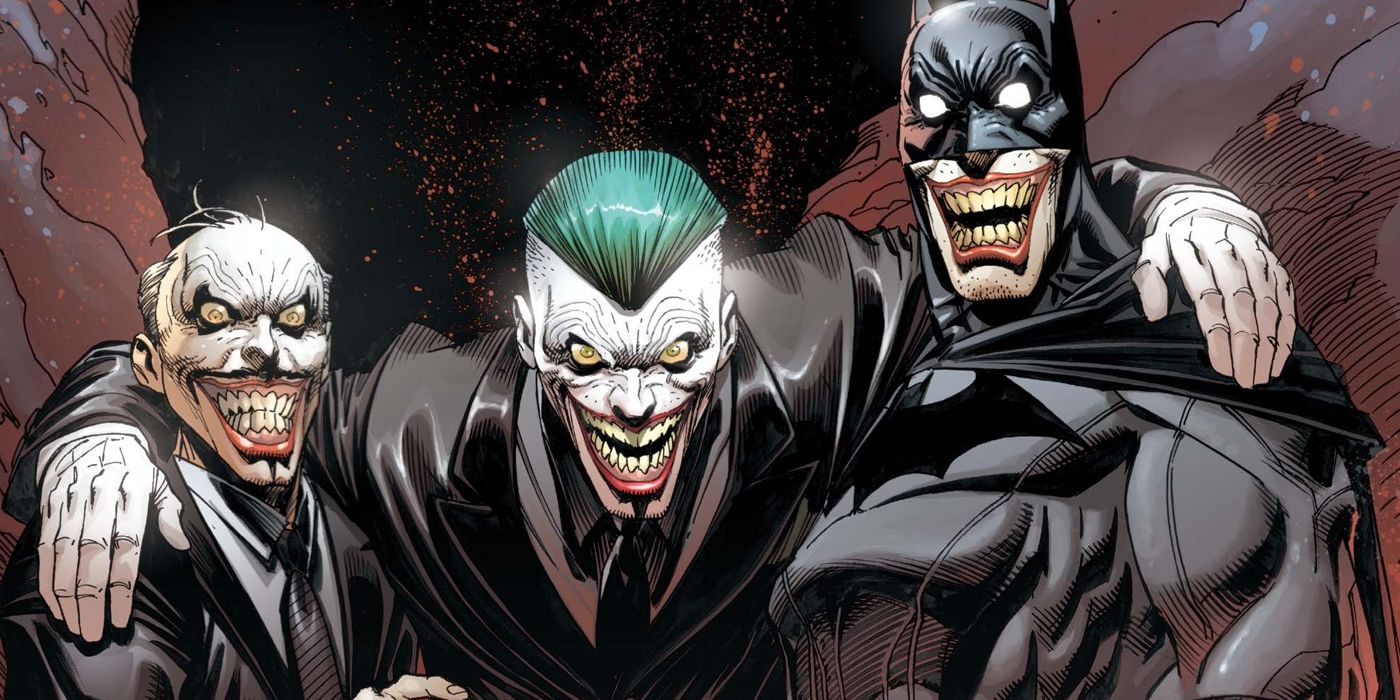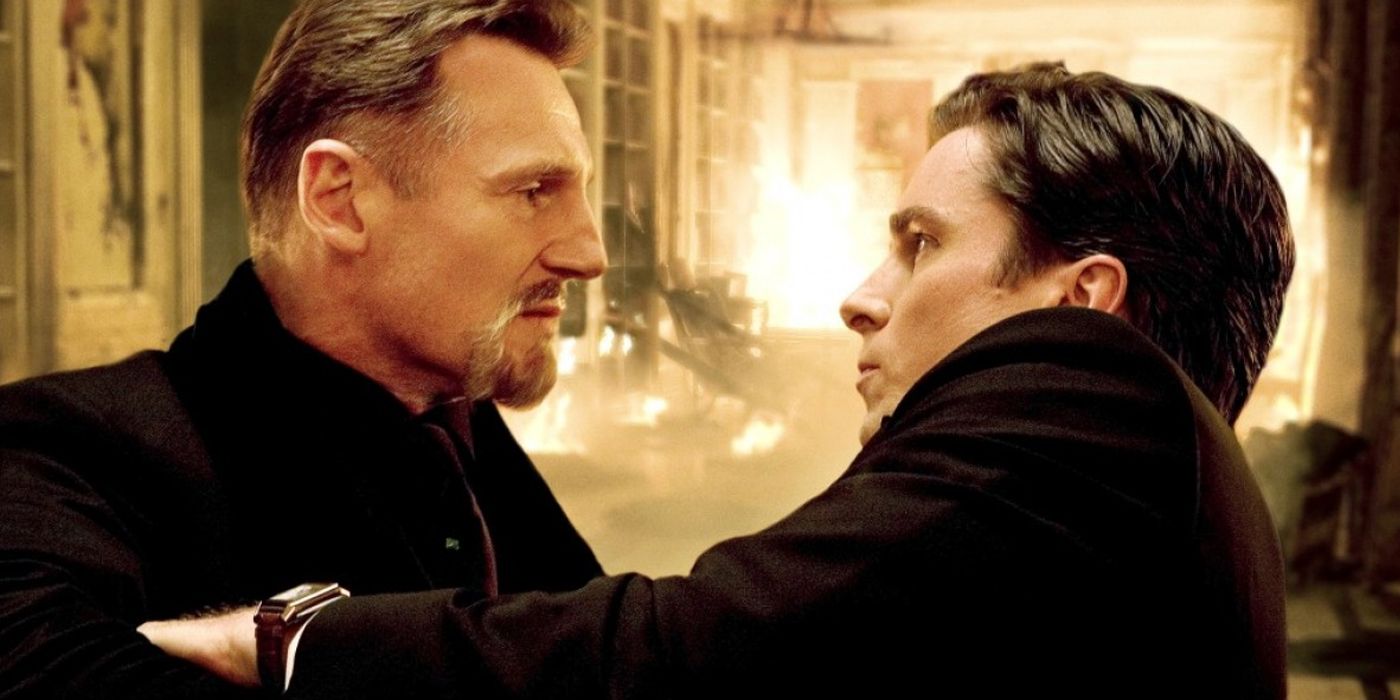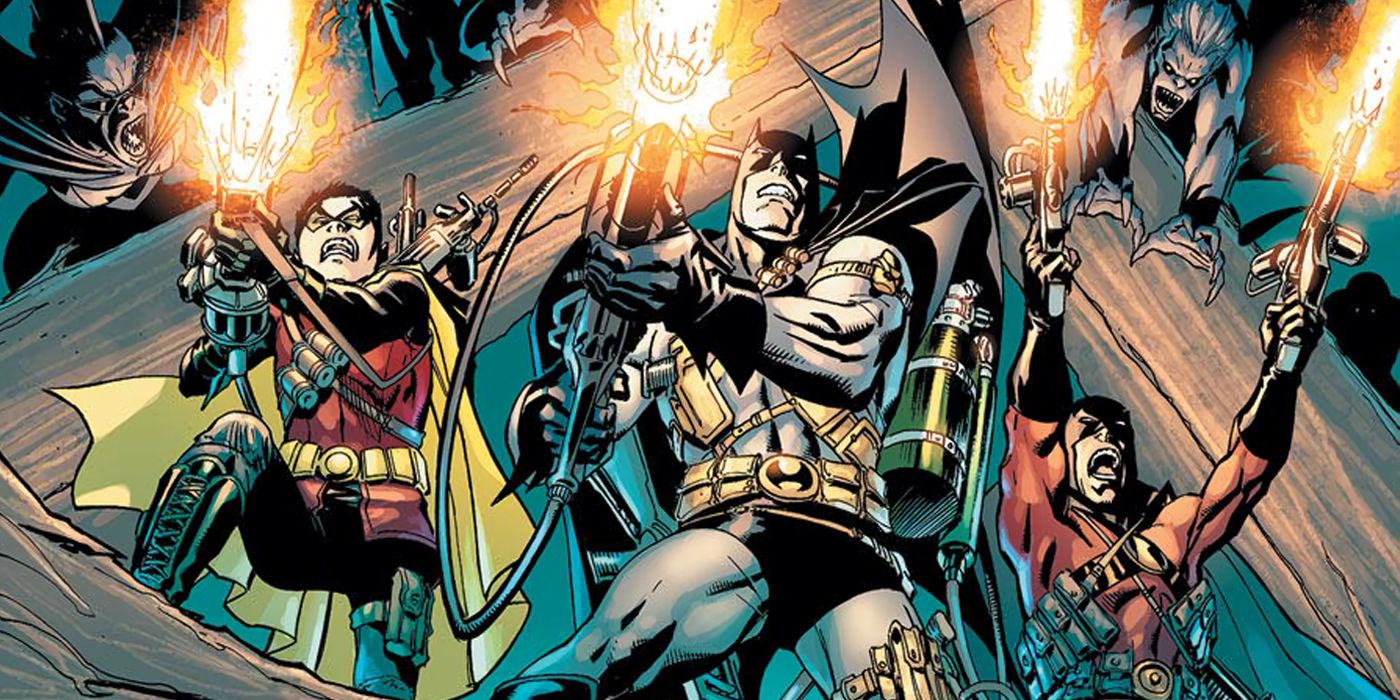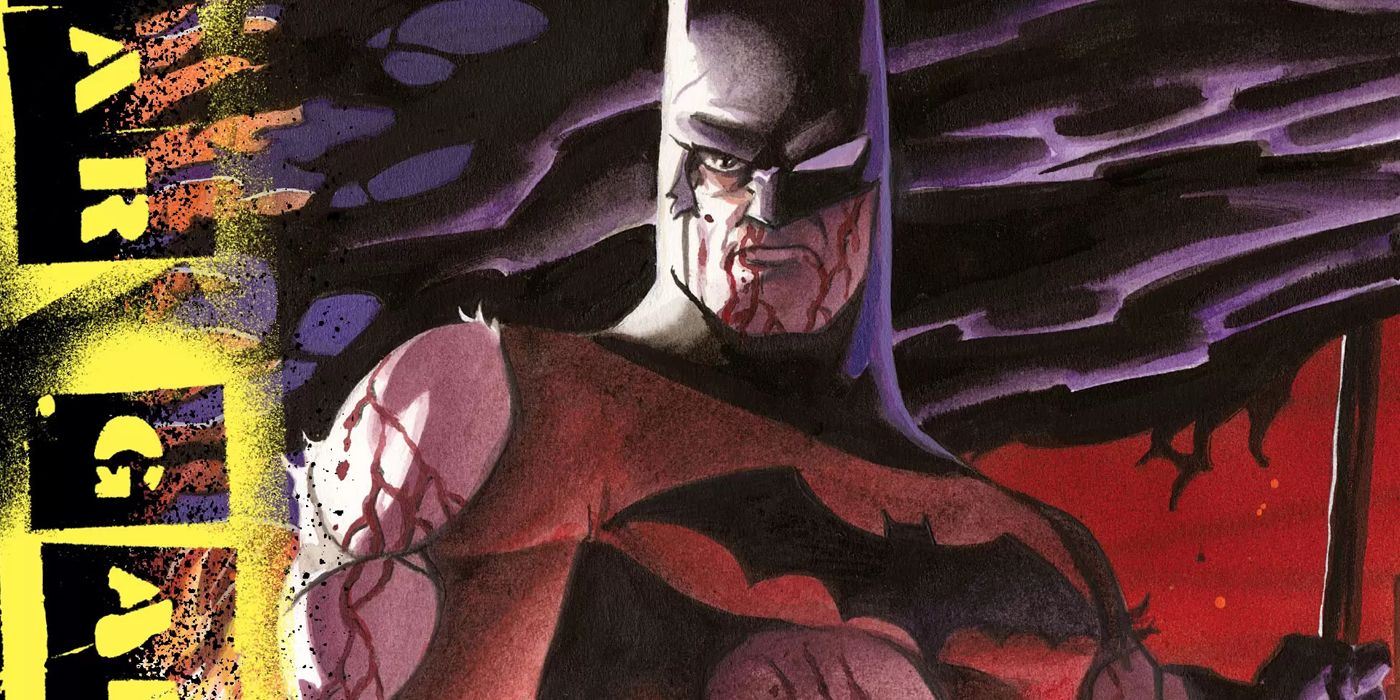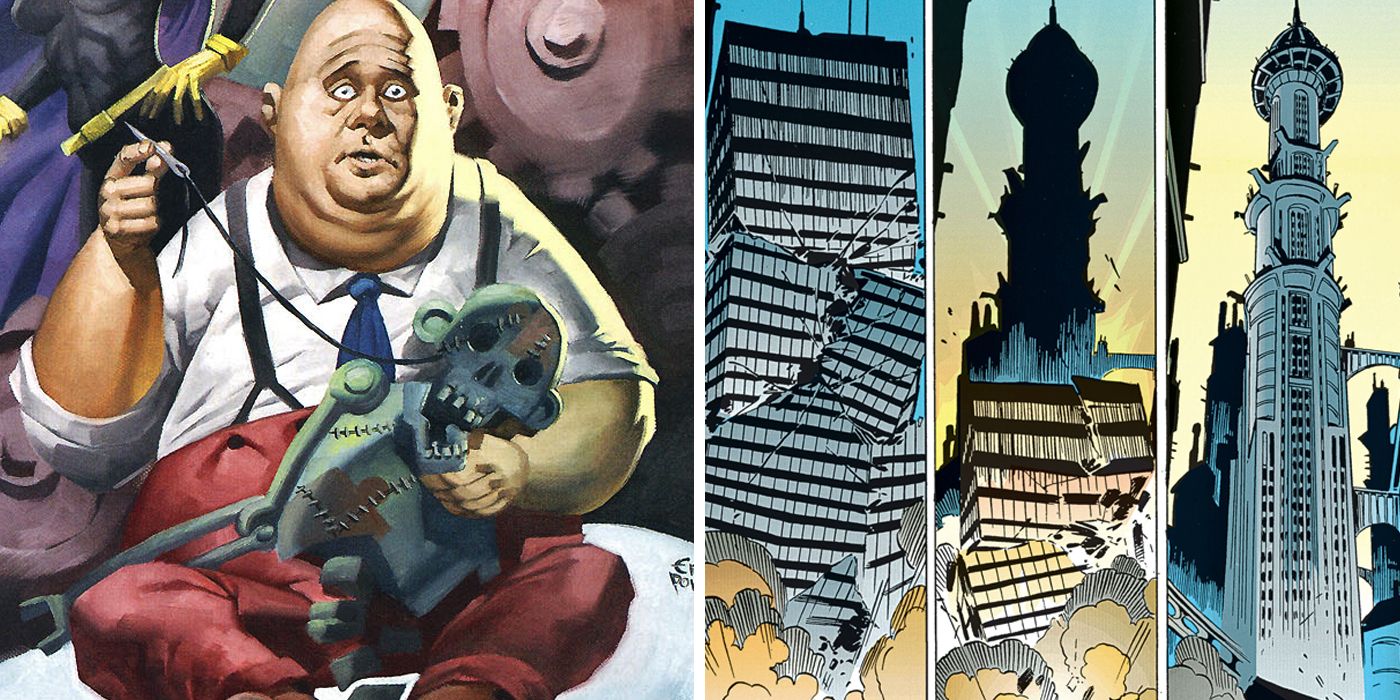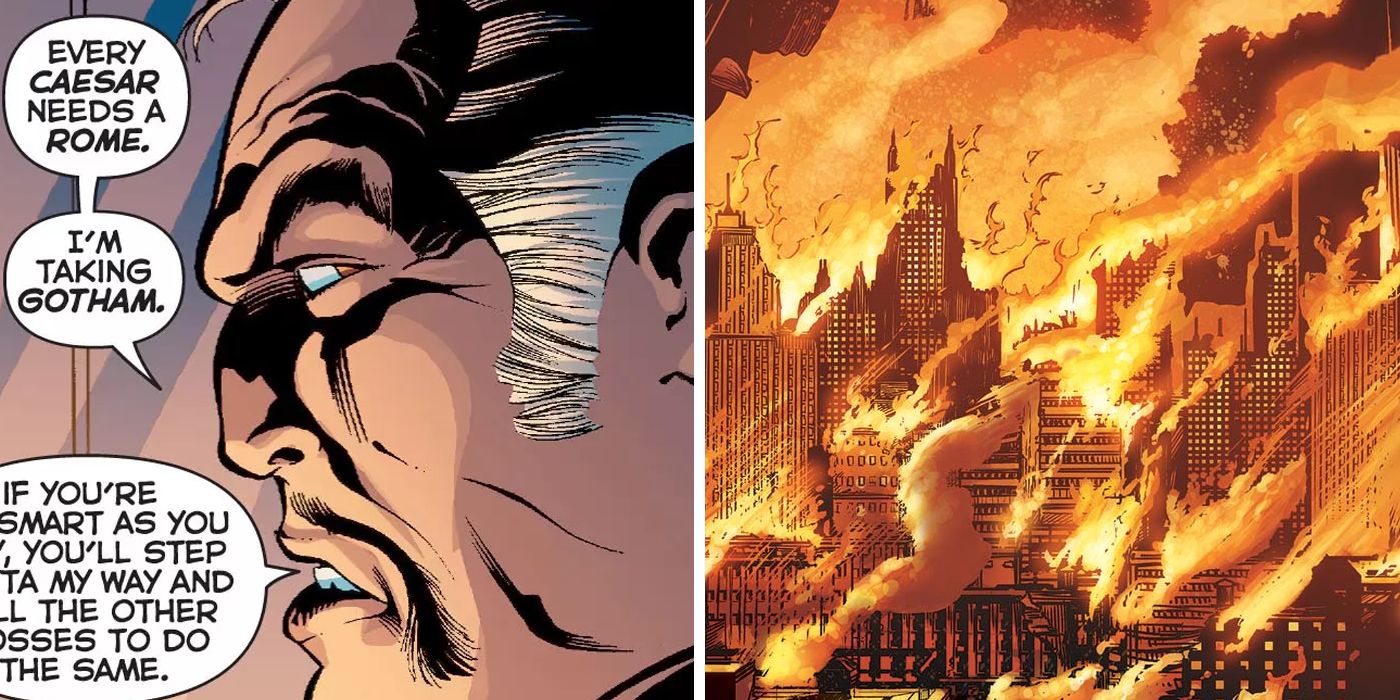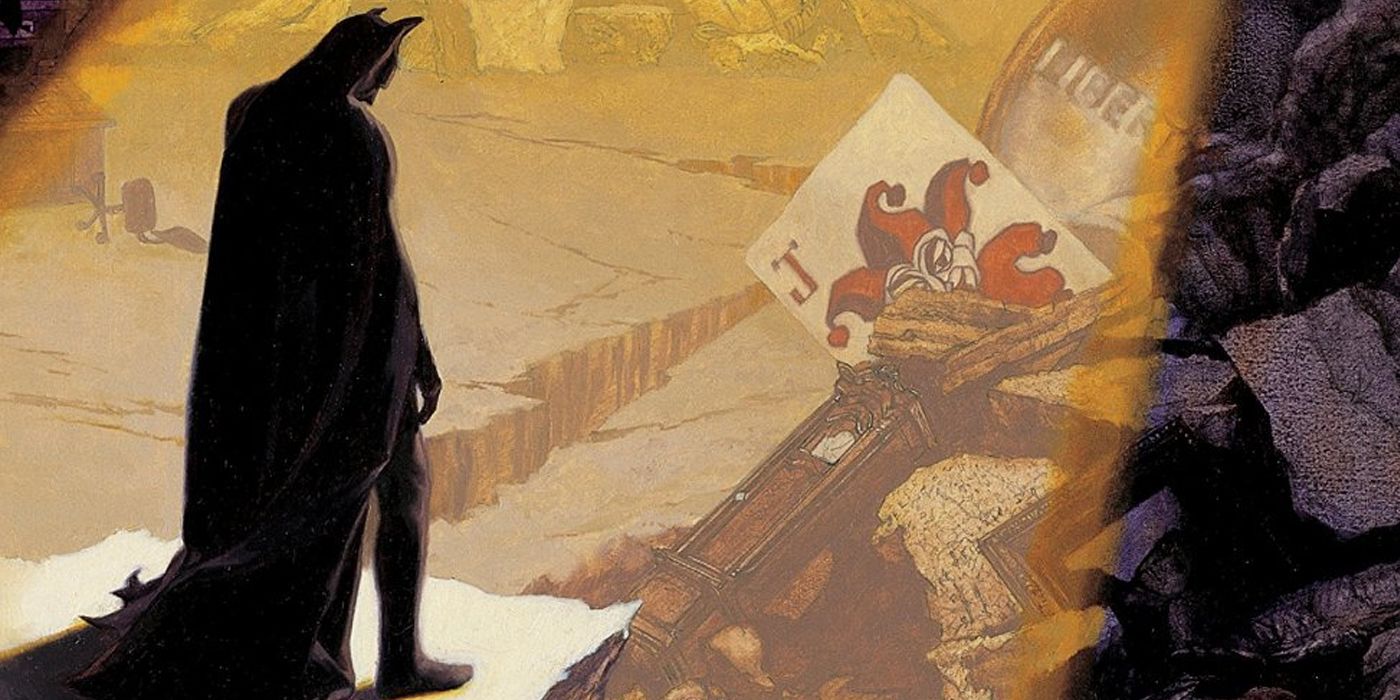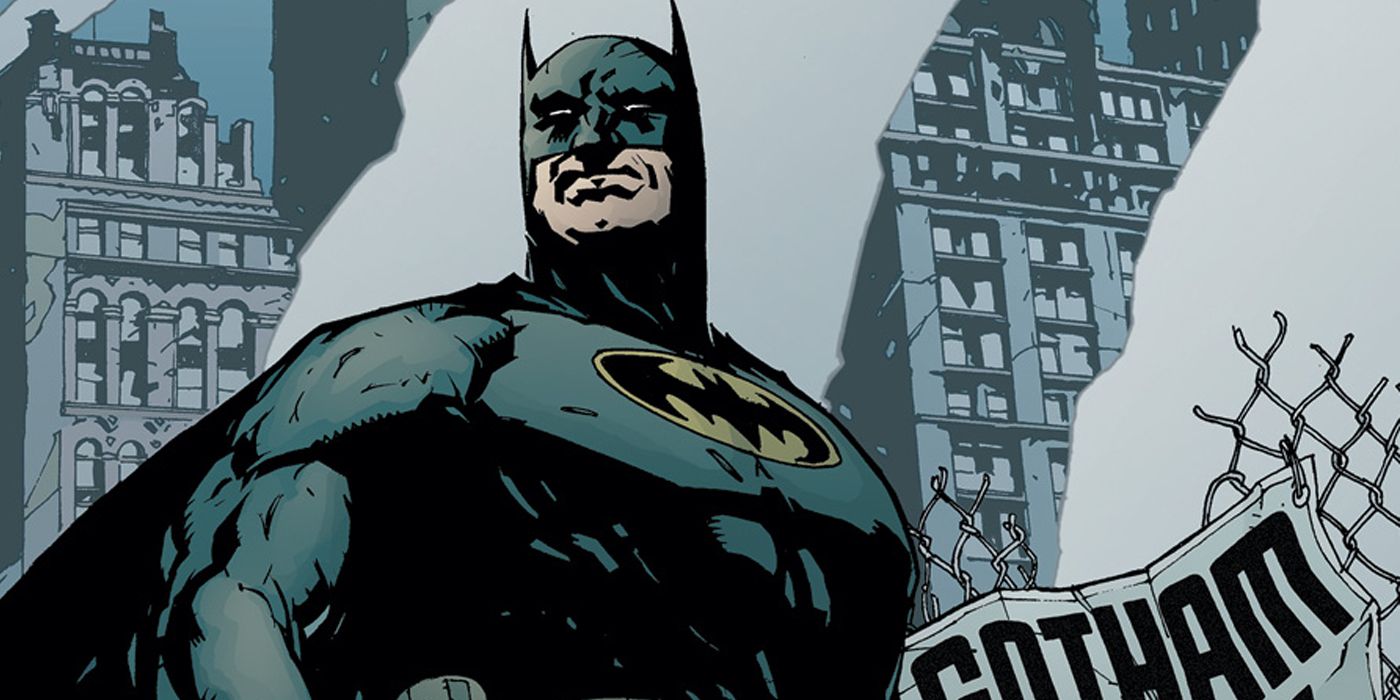Gotham City is one of the most famous fictional locations in all of pop culture. As Batman's hometown and primary stomping grounds, Gotham has appeared in countless comic books, movies, TV shows, video games, and in just about every other form of media imaginable. Despite its dark and dangerous streets, Gotham sits proudly at the center of the DC Universe, where it's still home for most of Batman's allies and his numerous costumed enemies. As a result of that prominence, Gotham has had some spectacularly bad luck. Even by comic book standards, Gotham and its residents have faced an inordinate number of hardships. With everything from realistic problems like poverty and street crime to the Joker's latest outlandish schemes, the New Jersey city seems locked in a perpetual battle for its existence.
RELATED: Metropolis: 15 Dark Secrets You Never Knew About Superman's City
Now, CBR is looking back at the worst things to ever happen to Gotham City. In this list, we'll be looking at some of the supervillain attacks, unnatural disasters and other impossible events that affected large swaths of Gotham and its civilian population. Since Gotham's history is littered with catastrophes, this hardly comprehensive list will focus, in no particular order, on major events from comics and film that left Gothamites reeling.
15 BANE'S OCCUPATION
In 2012, director Christopher Nolan's Batman trilogy came to a close with The Dark Knight Rises. While Gotham was already the backdrop for Nolan's operatic action epics, Tom Hardy's Bane gave Gotham its biggest cinematic challenge yet. After attacking Gotham's Stock Exchange and crippling Batman, Bane and his forces used the threat of a nuclear bomb to take over Gotham.
After killing Gotham's mayor and most of the Gotham Rogues football team on live TV, Bane cut the city off from the rest of the world in a plot influenced by several famous Batman storylines. As food and other supplies ran scarce, Bane's forces executed the rich and powerful under the guise of giving Gotham back to "the people." While Christian Bale's Batman and Gotham's police eventually saved the day, Gotham's civilian population lived in a state of fear and anarchy during Bane's months-long occupation.
14 ZERO YEAR
Like the all of DC's comics, Batman was relaunched as part it DC's universe-wide New 52 reboot in 2011. After a few years, the blockbuster creative team of Scott Snyder and Greg Capullo dramatically re-envisioned Batman's early days with the 2013 storyline "Zero Year." In that critically-acclaimed tale, the Riddler successfully took over Gotham City for months after the city was crippled by Hurricane Renee and a massive power outage.
While the Riddler has challenged Batman plenty of times, "Zero Year" made him one of the deadliest, most effective members of Batman's rogues' gallery. As vegetation began to take over the storm-damaged Gotham, the Riddler tortured the citizens of Gotham with his twisted puzzles and kept the ailing city under constant robotic surveillance. In one of his first major public appearances in this timeline, Batman took on the Riddler's challenge and successfully freed the city.
13 THE METAL MOUNTAIN
Even though DC's crossover Dark Nights: Metal just started in earnest, the 2017 storyline has already caused major destruction in Gotham City. In Scott Snyder and Greg Capullo's Dark Nights: Metal #1, a giant mountain surrounded by crackling dark energy appeared in the middle of Gotham City. Even though it caused widespread devastation and cost an untold number of civilian lives, it appears to be Challengers Mountain, headquarters to the mostly forgotten super-team, Challengers of the Unknown.
The Batman Who Laughs, a Joker-esque Batman from a dark alternate reality, seems to have some connection to the mountain. Along with his cabal of cannibalistic Robins, he freed several of Batman's foes and gave them reality-warping cards. Using those powers, villains like Mr. Freeze and the Riddler turned large parts of Gotham into labyrinths. In Metal's ongoing tie-ins, Robin, Green Arrow, Nightwing and their Gotham Resistance have started navigating those deadly mazes.
12 JOKER'S LATE SHOW
While the Joker might not be Batman's most powerful villain, his twisted mind, cunning and sheer ferocity make him the most dangerous man in Gotham City by a large margin. That holds true in most of DC's alternate timelines, including the world of Frank Miller's 1986 masterpiece, The Dark Knight Returns. When an elderly Bruce Wayne came out of retirement to wear Batman's cape and cowl again, the Joker awoke from a catatonic state to face his old foe.
After convincing the world that he was sane, the Joker made an appearance on a late night talk show with a seemingly endless studio audience. Halfway through his appearance, he killed the show's other guests and its studio audience with his trademark Joker gas. In that media-obsessed reality, the deaths of "hundreds" of audience members would only add to the immense psychological anxiety of living in an almost-dystopian Gotham City.
11 THE APOCALYPSE PLAGUE
Throughout the mid-to-late 1990s, Batman's annual crossover storylines plunged Gotham City into a series of disasters. In 1996, two of these storylines, "Batman: Contagion," and "Batman: Legacy" dealt with the release of a deadly strain of Ebola called the Apocalypse Plague or the Clench. In these expansive tales by creators like Chuck Dixon, Dennis O'Neil and Doug Moench, this deadly virus brought Gotham to its knees and threatened the rest of the world.
While the plague spread throughout Gotham, Batman's allies crisscrossed the globe looking for survivors from a previous outbreak. All of Gotham was eventually quarantined, but "Contagion" focused on the plague's effects on Babylon Towers, a self-sufficient residential complex for the mega-rich. Although Robin contracted the virus, he was cured when an antidote was found. In "Legacy," Ra's al Ghul and the League of Assassins tried to unleash a mutated form of the virus on the world.
10 ARKHAM RUNS WILD
For most of its existence, Arkham Asylum has been one of Gotham's most troublesome features. While it was meant to treat the "criminally insane," Arkham's instability has made it a breeding ground for new villains like Harley Quinn. While its residents have made mind-boggling number of successful breakouts, one of Arkham's biggest failures came during Peter Tomasi and Scott Eaton's miniseries Forever Evil: Arkham War.
In that 2013 miniseries, the Penguin became Gotham's mayor, released Arkham's inmates, demolished the city's exits and gave parts of the city to most of Batman's famous foes. Simultaneously, Bane organized a breakout at Blackgate Prison, and his faction started fighting with Penguin's Arkham forces on the streets of Gotham. Thanks to his tactical genius and sheer strength, Bane and his forces prevailed and took control of a devastated Gotham. After the larger Forever Evil crossover ended, Batman defeated Bane and took back Gotham.
9 JOKER'S ENDGAME
While the Joker played a major role near the start of Scott Snyder and Greg Capullo's run on Batman, the Clown Prince of Crime disappeared for a few years in the middle of that blockbuster run. The Joker changed that when he made his vicious return in the storyline "Endgame." Starting in 2014's Batman #35, the Joker launched his final assault on Batman with a contagious form of his Joker toxin.
After infecting the Justice League, the Joker unleashed his improved toxin on Gotham, where it caused mass chaos and panic in the streets. This airborne version of Joker's signature weapon could be transmitted through laughter and turned its victims into twisted mirrors of the Joker before killing them. Although Batman and his allies were able to keep Gotham from tearing itself apart, "Endgame" was filled with haunting images like Joker-infected newborn children.
8 THE LEAGUE OF SHADOWS' DEPRESSION
Despite Bruce Wayne's personal fortune, Gotham City has never been a wealthy place. Whether it's an echo from its creation in the waning days of the Great Depression or just perennial bad luck, Gotham has been haunted by economic uncertainty for most of its existence. While that's usually just part of Gotham's backdrop, director Christopher Nolan weaponized Gotham's ailing economy in 2005's Batman Begins.
As Liam Neeson's Ra's al Ghul explained near the film's finale, his League of Shadows tried to destroy Gotham City using "economics." While this caused hardship throughout the city, Gotham lived on thanks to the actions of people like Thomas and Martha Wayne. After that effort barely failed, Ra's and the League tried to destroy Gotham again by spreading Scarecrow's fear gas throughout the city's water supply. Although that gave some Gothamites bad nightmares, Batman saved the day before there was a real catastrophe.
7 BLACKEST NIGHT
Like the rest of the DC Universe, Gotham City was infested by Black Lantern zombies during the blockbuster 2009 crossover Blackest Night. Since Bruce Wayne was lost in the timestream during that event, Dick Grayson, the first Robin, was Batman, and Bruce's long-lost son Damian was Robin. Together with another ex-Robin, Tim Drake, the heroes faced off against zombified versions of minor dead Batman villains like KGBeast, Magpie and Ventriloquist.
In Peter Tomasi and Ardian Syaf's miniseries Blackest Night: Batman, the Black Lantern zombies attacked Gotham and took over the Gotham City Police Department's headquarters. Despite their enthusiastic use of flame-throwers, the team was no match for the Black Lanterns, who now included Grayson and Drake's undead parents. In a questionable move, the outnumbered heroes used Mr. Freeze's ice gun to briefly freeze themselves until the zombies went away to menace other Gothamites.
6 BATMAN: WAR GAMES
After Tim Drake, the third Robin, briefly retired in 2009, Stephanie Brown, the teen hero Spoiler, took his mantle and his place at Batman's side. While Brown was a fan-favorite character, Batman fired her for her inexperience in the field. While trying to get back on Batman's good side, Brown inadvertently started a full-scale gang war in Gotham and kicked off the controversial 2009 crossover "Batman: War Games."
Starting in Devin Grayson and Ramon Bachs' Batman: The 12-Cent Adventure #1, the streets of Gotham were filled with gunfire and totally consumed by gang violence. Despite the objections of fans and some of the crossover's creators, Brown was tortured and seemingly killed during the crossover. Although that was later revealed to be a faked death, the crossover turned the brutal criminal Black Mask into Gotham City's underworld kingpin.
5 GOTHAM'S DEMOLITION
From the oversized advertising props of its early days to its trademark art deco style, Gotham's unique skyline changed dramatically after some oddly specific attacks. As revealed in Dan Slott and Ryan Sook's Arkham Asylum: Living Hell #3, the construction-obsessed Humpty Dumpty accidentally caused several over-sized props to fall off of buildings and onto the citizens of Gotham City. Subsequently, those types of displays were outlawed by the Sprang Act.
After Tim Burton's Batman movies introduced Anton Furst's distinctive Gotham City, creators like Chris Sprouse and Norm Breyfogle made comics' Gotham look like its cinematic counterpart in the 1992 storyline, "Destroyer." In the 1992 story, the Destroyer demolished several buildings to reveal the intricate gothic designs hidden inside their pedestrian shells. The story revealed that the buildings were designed by 19th century architect Cyrus Pinkney to fight the inherent evil that permeated through Gotham City.
4 GOTHAM'S INFERNO
With so many explosive residents, it's not too surprising that the city has caught fire on more than one occasion. In a nod to the histories of several real world cities, Gotham's first inferno burned the young city to the ground in 1785. More recently, the mob boss Bruno Mannheim, who's traditionally a Superman villain, tried to turn Gotham into a fire pit in 2007's 52 #48, by a Geoff Johns, Grant Morrison, Greg Rucka, Mark Waid, Keith Giffen and Darick Robertson.
In that story, Mannheim wanted to use the Crime Bible and turn Earth into a replica of Darkseid's dystopian world Apokolips. While he wasn't able to fully turn Gotham into one an Apokolips-style fire-pit, he still incinerated a portion of the city. Batman's arson-loving foe Firefly has also started countless fires of varying intensity in Gotham throughout his criminal career, most recently in the series Batman Eternal.
3 MARTIAL LAW IN GOTHAM
As part of Batman's 75th anniversary, the weekly series Batman Eternal told a massive Batman epic starting in 2014. With an all-star creative team featuring Scott Snyder, Jason Fabok, James Tynion IV and others, the cliffhanger-filled story followed an orchestrated campaign of attacks that brought Gotham to its knees.
From the subway collision that kicked the story off to a mass escape from Arkham Asylum, an untold number of civilians were injured or killed during the events of Batman Eternal. Despite the best efforts of Batman and his numerous allies, Jason Bard was installed as Gotham's police commissioner and declared martial law in the city, which only made the situation more chaotic. This action-packed tale also gave major roles to minor villains like the mastermind Cluemaster, Bruce Wayne's childhood friend Hush and Lincoln March, a member of the secretive Court of Owls.
2 BATMAN: CATACLYSM
In a moment that set off years of Batman stories, Gotham City was rocked by a powerful earthquake that registered 7.6 on the Richter scale in 1998. In the expansive ensuing crossover, "Batman: Cataclysm," Batman and his trusted allies tried to save their city from collapsing in on itself in the quake's wake. As seen in Alan Grant and Mark Buckingham's Batman: Shadow of the Bat #73, the quake devastated familiar landmarks like the Batcave and Wayne Manor.
While Wayne Enterprise's quake-proof buildings stood tall, most of Gotham's buildings were seriously damaged or reduced to rubble. Even though the Bat-family tangled villains like Bane and the Ventriloquist and stopped a breakout at Blackgate Prison, the real focus of the crossover was on search and rescue. Despite their efforts, the quake still killed an estimated 100,000 Gothamites.
1 NO MAN'S LAND
After Gotham's earthquake, the U.S. government decided that Gotham would be too costly to rebuild, destroyed the city's exits, and declared it a "No Man's Land." Throughout 1999, the fondly-remembered crossover "Batman: No Man's Land" followed the brave few who remained in the abandoned city. Inspired by post-apocalyptic classics like Escape from New York, the epic followed Batman and his allies as they took Gotham back from Batman's villains one block at a time.
"No Man's Land" also marked the debut of the third Batgirl, Cassandra Cain, and introduced Harley Quinn into the DC Universe. The year-long story was a masterclass in editorial coordination by Dennis O'Neil and Jordan B. Gorfinkel, and featured work from comics giants like Greg Rucka and Ed Brubaker. Even though it brought Gotham to the brink of total annihilation, "No Man's Land" fueled dozens of well-received stories and still casts a shadow over Batman's mythology.
Stay tuned to CBR for all the latest happenings in Gotham City and the rest of Batman's world. Let us know what Your favorite Batman crossover is in the comments!

